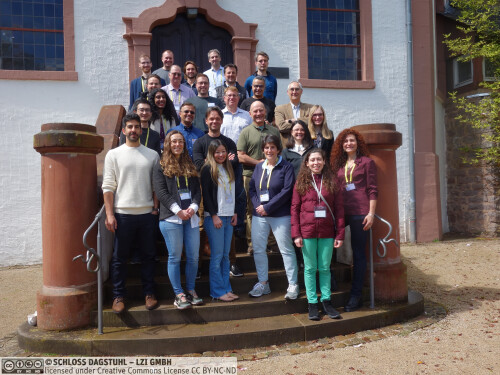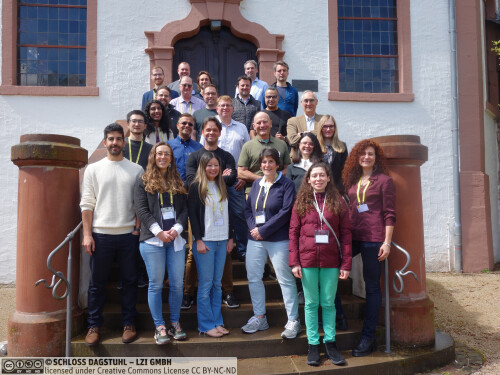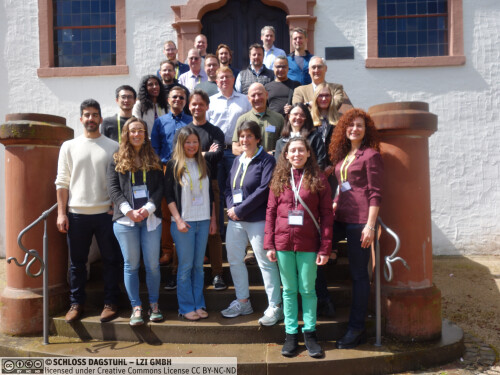Dagstuhl Seminar 24162
Hardware Support for Cloud Database Systems in the Post-Moore’s Law Era
( Apr 14 – Apr 19, 2024 )
Permalink
Organizers
- David F. Bacon (Google - New York, US)
- Carsten Binnig (TU Darmstadt, DE)
- David A. Patterson (University of California - Berkeley, US)
- Margo Seltzer (University of British Columbia - Vancouver, CA)
Contact
- Andreas Dolzmann (for scientific matters)
- Jutka Gasiorowski (for administrative matters)
Dagstuhl Reports
As part of the mandatory documentation, participants are asked to submit their talk abstracts, working group results, etc. for publication in our series Dagstuhl Reports via the Dagstuhl Reports Submission System.
- Upload (Use personal credentials as created in DOOR to log in)
Dagstuhl Seminar Wiki
- Dagstuhl Seminar Wiki (Use personal credentials as created in DOOR to log in)
Shared Documents
- Dagstuhl Materials Page (Use personal credentials as created in DOOR to log in)
The end of scaling from Moore’s and Dennard’s laws has greatly slowed improvements in CPU speed, RAM capacity, and disk/flash capacity. Meanwhile, cloud database systems, which are the backbone for many large-scale services and applications in the cloud, are continuing to grow exponentially. For example, most of Google’s products that run on the Spanner database have more than a billion users and are continuously growing. Moreover, the growth in data also shows no signs of slowing down, with further orders-of-magnitude increases likely, due to autonomous vehicles, the internet-of-things, and human-driven data creation. Meanwhile, machine learning creates an appetite for data that also needs to be pre-processed using scalable cloud database systems. As a result, cloud database systems are facing a fundamental scalability wall on how to further support this exponential growth given the stagnation in hardware.
While database research has a long tradition of investigating how modern hardware can be leveraged to improve overall system performance – which is also shown by the series of past Dagstuhl Seminars – a more holistic view is required to address the imminent exponential scalability challenge that databases will be facing. However, applying hardware accelerators in database needs a careful design. In fact, so far, no commercial system has applied hardware accelerators at scale. Unlike other hyper-scale applications such as machine learning training and video processing where accelerators such as GPUs and TPUs circumvent this problem, workloads in cloud database systems are typically not compute-bound and thus benefit less or not at all from such existing accelerators. Database systems also rely more on balanced performance across the full storage hierarchy, from level 1 caches all the way to disks accessed over the network.
This Dagstuhl Seminar aim to bringing together leading researchers and practitioners from database systems, hardware architecture, and storage systems to rethink, from the ground up, how to co-design database systems and compute/storage hardware. By bringing together experts across these disciplines, we hope to identify the architectural changes and system designs that will enable the order-of-magnitude improvements required for the next generation of applications. Many directions can be discussed: Instead of focusing on how to leverage accelerators, should we not focus on how to efficiently enable systems that allow us to have a more flexible balance of cores, accelerators, fabrics, RAM, and IO? In the same vein, we think that it is worth investigating how to customize CPU architectures for database workloads instead of using existing accelerators such as GPUs? Another interesting direction is how do we balance disaggregation which promotes resource efficiency with aggregation that promotes performance? And most prominently, how do we avoid the pitfalls of much past work, both academic and industrial, on accelerators or storage subsystems that wind up failing due to limited impact?
 David F. Bacon, Carsten Binnig, David A. Patterson, and Margo Seltzer
David F. Bacon, Carsten Binnig, David A. Patterson, and Margo Seltzer
- Anastasia Ailamaki (EPFL - Lausanne, CH) [dblp]
- Gustavo Alonso (ETH Zürich, CH) [dblp]
- David F. Bacon (Google - New York, US) [dblp]
- Lawrence Benson (TU München, DE) [dblp]
- Carsten Binnig (TU Darmstadt, DE) [dblp]
- Alexander Böhm (SAP SE - Walldorf, DE) [dblp]
- Helena Caminal (Google - Sunnyvale, US)
- Yannis Chronis (Google - Sunnyvale, US) [dblp]
- Holger Fröning (Universität Heidelberg - Mannheim, DE) [dblp]
- Jana Giceva (TU München - Garching, DE) [dblp]
- Mark D. Hill (University of Wisconsin-Madison, US) [dblp]
- Ihab Francis Ilyas (University of Waterloo, CA) [dblp]
- Zsolt Istvan (TU Darmstadt, DE) [dblp]
- Lana Josipovic (ETH Zürich, CH)
- Tim Kraska (MIT - Cambridge, US) [dblp]
- Justin Levandoski (Google - Seattle, US) [dblp]
- Jignesh M. Patel (Carnegie Mellon University - Pittsburgh, US) [dblp]
- David A. Patterson (University of California - Berkeley, US) [dblp]
- Holger Pirk (Imperial College London, GB) [dblp]
- Tilmann Rabl (Hasso-Plattner-Institut, Universität Potsdam, DE) [dblp]
- Eric Sedlar (Oracle Labs - Redwood Shores, US) [dblp]
- Margo Seltzer (University of British Columbia - Vancouver, CA) [dblp]
- Pinar Tözün (IT University of Copenhagen, DK) [dblp]
- Nandita Vijaykumar (University of Toronto, CA)
- Tianzheng Wang (Simon Fraser University - Burnaby, CA) [dblp]
- Lisa Wu Wills (Duke University - Durham, US)
- Tobias Ziegler (TU Darmstadt, DE) [dblp]
Classification
- Databases
- Hardware Architecture
Keywords
- Database systems
- Hyperscale systems
- Cloud computing
- Computer architecture
- Hardware/software co-design




 Creative Commons BY 4.0
Creative Commons BY 4.0
